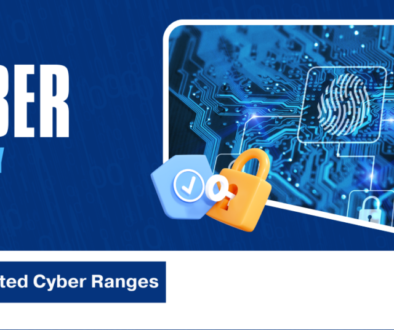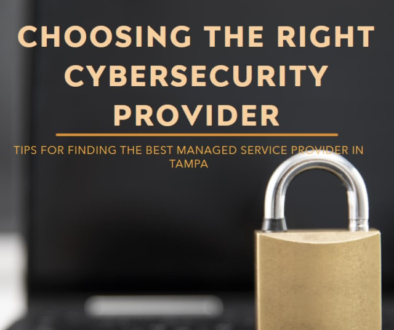10 Key Strategies for Securing Multi-User Networks
It was February 2024, around 3 in the morning, when a post was made in a clandestine hacker group.
The tech world was shocked to learn of a new tool for sale on the dark web. It claimed to easily infiltrate multi-OS users of Windows, Mac OS, and Linux. Dubbed M.O.R.E, it could decrypt a 1 GB file in 4 seconds. It’s just one reason why multi-user network security is so important today.
Multi-user networks have become widespread in this tech-dependant age. From offices to international airlines, these systems are everywhere. So are cybersecurity issues. Allowing multiple users access to your secure networks will also give passage to sneaky cyber marauders.
Imagine hackers accessing patients’ EHRs or losing voter data. That’s why we’ll discuss some essential tips for multi-user network cybersecurity in this brief blog.
Multi-User Network Cybersecurity: 10 Important Tips
Multi-user networks are interconnected. This is a flaw. A single infected computer will spread a virus to the whole network. Also, information sharing across multiple nodes may get exploited by a hacker (or, most likely, a disgruntled employee). Unauthorized access to one account may give criminals access to other accounts as well. So, you can prevent these mishaps with these crucial tips:
1. Conduct Regular Security Audits
Start by doing periodic audits. They will find system vulnerabilities. Also, they will check if current security measures are working. That’s where Active Directory auditing comes in, as it is a crucial step to securing your organization legally and operationally. Active Directory (AD) was created to simplify identity services for Microsoft network admins. However, it suffers from these flaws:
- No native alerting tools
- Dormant threat actors stay undetected
- AD auditing is mandatory as per regulations like SOX 404
So, keep auditing AD to make sure that your multi-user network doesn’t have any weak points.
2. Implement Strong Controls
RABC (role-based access control) is the foundation of a secure network. It means that each employee will get access privileges based on their role in the company. For instance, the HR department can view and update employee records. Employees can only view their records.
That’s how you can curb unauthorized data access, keeping your sensitive data out of reach of hackers. An added security layer will come from MFA or multi-factor authentication.
3. Use Firewalls
This one’s a no-brainer; firewalls protect your multi-user network by constantly monitoring it from threats. So, deploy a firewall on all workstations to keep an eye on all incoming and outgoing traffic.
This firewall will block unauthorized access and security issues.
4. Deploy IDPS
When we’re talking about deployment, let’s not forget intrusion detection and prevention systems. Dubbed IDPS, these systems will monitor network traffic far better than a firewall can. As such, they will efficiently look for suspicious and malicious activity on your multi-user network.
After detecting intrusion, the IDPS will either block that suspicious activity of its own or alert admins that a data breach is in the making.
5. Keep Updating Your Software
It goes without saying that malware is getting advanced with time. Your old software might not be suitable for tackling the latest iterations of common phishing algorithms. That’s why you should update your software by downloading the latest patches from service providers.
It’s a great way to close security vulnerabilities a hacker might exploit, as in the case of Equifax, whose data was breached in 2017. Hackers spotted a vulnerability in its web app framework that was used by many users within the organization. Stealing Equifax’s sensitive data, hackers got access to 147 million people’s records, such as credit card details. Software updates would’ve prevented this.
6. Keep Your Data Encrypted
How do we ensure data safety after someone gains access to it for malevolent purposes?
In that case, your data must be encrypted (both at present and in transit). Data encryption will make this info useless for someone who accesses it without proper authorization. This data is only readable if the person accessing it also has the right decryption key/s.
7. Implement Network Segmentation
Another great strategy is to divide the multi-user network into several smaller networks. Segmentation helps limit the spread of viruses/malware.
In case one segment gets infected, the attacker won’t be able to perform a widespread attack this way. So, admins overcome the biggest flaw of interconnectedness via network segmentation. VLAN segmentation and firewall segmentation are a few examples of this.
8. Use SIEM
The term “SIEM” stands for security information and event management. This system will collect log data to analyze it deeply. It’ll look for anomalies and respond to suspicious incidents. Let’s say a worker receives an email from an unknown address with a ZIP file attached. For SIEM, this is an anomaly that requires its attention. The ZIP file may contain a ZIP bomb, such as “42.zip” or similar files.
9. Educate Your Employees
Sadly, many cases of data breaches stem from human negligence. Let’s say a worker opens an email that says generic scammer stuff like “You’ve won this,” unknowingly downloading a virus on the system.
That’s why managers and admins should educate workers about best cybersecurity practices. Teach the workforce how to create strong passwords or recognize phishing attempts. That’s how to cut multi-user network security issues.
10. Adopt a Zero-Trust Model
Give access privileges a VIP treatment. In fact, you should adopt the principle of least privileges as well as the zero-trust security model. This approach assumes that no user/device is to be trusted fully. That is, constant user ID verification is implemented to minimize internal threats to your network.
To cut the story short, multi-user networks are prone to security issues that require data encryption. Also, the admin must: deploy a firewall, adopt a zero-trust model, raise staff cybersecurity awareness, and audit policies. These strategies will prevent cybercriminals from gaining access to your sensitive data. Multi-user network security is the need of the hour.



